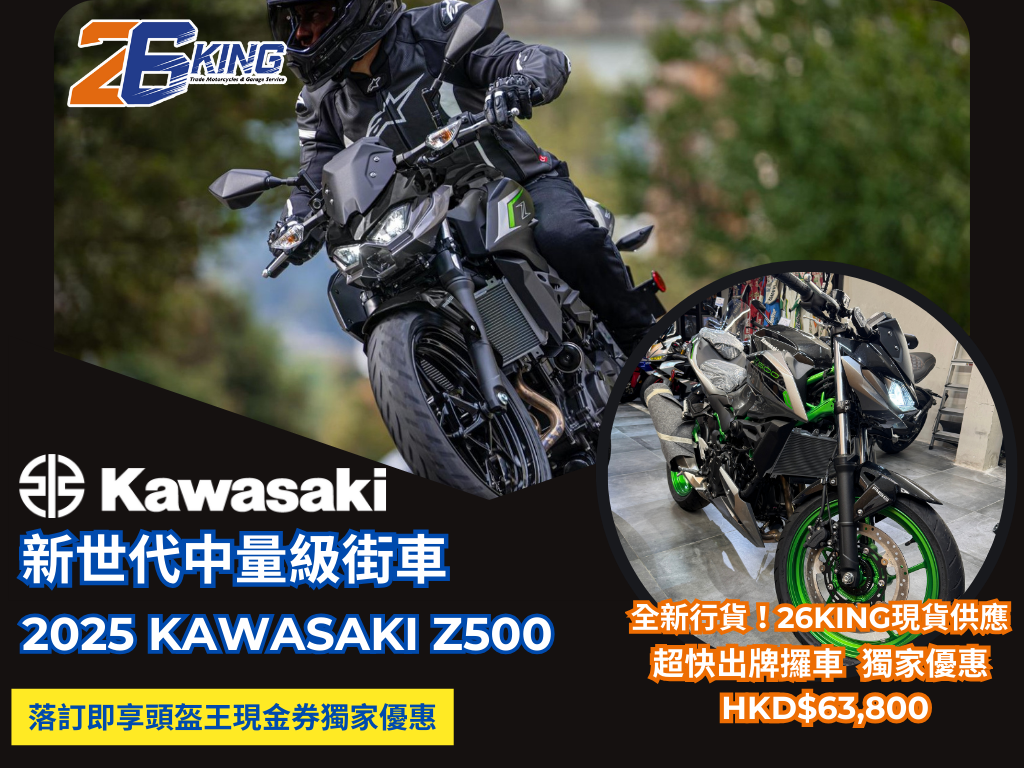
【騎士補完計劃】2025 Kawasaki Z500:新世代中量級街車
日期: 2026-01-15
2022-05-16
The brain is made up of billions of nerve cells called neurons. These neurons communicate with each other through circuitry that often goes unnoticed. However, the intricate network of neuronal connections in the brain is what keeps us breathing and blinking, alerts us to danger, and makes decisions. In fact, the human brain is only 25 percent occupied by the skull. Therefore, protecting the brain from injury is very important.
In addition to protecting against external forces such as large impacts or falls, concussion helmets can also protect against penetration trauma caused by an object penetrating into the skull. A helmet that protects against penetration trauma also has a hard outer shell that prevents something with sharp edges inside it from puncturing the skin and damaging underlying structures. The main part of this protective shell is usually made up of foam padding which absorbs force when striking an object or falling forwards onto your head.
Extending outward from this soft inner padding area are several layers that surround your head and neck like a bucket lid or a car hood to prevent anything from penetrating through it. As well as absorbing energy from impacts, these layers also distribute impact evenly across them so they don’t all happen at once on one side of your head or neck where you can feel it most intensely.
This distribution reduces strain on your neck and spine and therefore helps reduce injury in those areas if you happen to have an accident while wearing a protective helmet like this one.
One of the most important things to look for when choosing a helmet is having an understanding of how helmets protect your head against penetration trauma. As mentioned, helmets that protect against penetration trauma are usually made up of foam padding and an outer shell.
The foam padding will absorb force from impacts that don’t reach the hard outer shell, which will prevent objects with sharp edges inside them from reaching the brain or skull below the helmet. This makes it very important to choose a helmet that has this type of protection.
It should also have a visor so you can see clearly while wearing it and a suspension system that helps keep your head in place without pressure or discomfort on your head when you wear it. A helmet that protects against penetration trauma can also help prevent concussions.
The impact would be absorbed by the padding before reaching your head and skull below the helmet, as opposed to being transmitted back into your brain causing a concussion. This is especially beneficial if you wear this type of protective helmet before going out for sports or during recreational activities where there is a high risk of concussion from impact forces such as falls or blows to the head and body.
A helmet can be broken down into three basic types: cap, cage, and bucket.
Cap helmets are the most common type of helmet and encapsulate the head using elastic materials. Because caps have a hard shell inside them, they are best for absorbing impact energy. This type of helmet is often used for cycling or other action sports.
Cage helmets have a hard outer shell that protects the head from penetration trauma caused by objects that may fall on it like rocks, large branches, or tree trunks. This hardshell also prevents objects with sharp edges from penetrating through it to damage underlying structures such as your brain or spinal cord.
However, while they protect against penetration trauma, they do not offer protection against impacts because the hard outer shell is not elastic like a cap helmet.
Bucket helmets offer more protection than a cap and cage due to their design and use of a hard outer shell made out of foam padding over an inner soft padding layer that absorbs impact energy when struck by something like falling onto your head or an object striking your skull with sharp edges.
Bucket helmets also use several layers of flexible material that surround your head and neck to distribute impact evenly across them so that nothing happens at once where you can feel it intensely when it does happen. Helmet protection of this type of helmet is the best.
The helmet also has a hard outer shell that can absorb force. When you're struck by an object or fall forwards, the hard outer shell absorbs the impact and distributes it evenly across the layers like a bucket lid or a car hood. This not only protects the scalp from being injured but also prevents blunt impacts from causing a concussion.
Lastly, it is important to mention that with a helmet on, you are more likely to avoid head and neck injuries in many ways. For example, if you were wearing your helmet when you fell, it could have prevented you from hitting your head on something hard as well as possibly saving your life. The main purpose of these helmets is to protect from concussions.
The helmet also provides another layer of protection for your neck and face. The layers on the outside of the helmet are usually made up of hard plastic that protects your face from any impact or object coming at you from the side or back.
The foam padding inside the helmet covers your head and neck, providing additional protection. This foam padding can also be used to cushion against falls and jolts by spreading out force. The foam padding also prevents your head or neck from being injured when it comes into contact with an object like a pole or railing. These are the ways how do safety helmets work.
The helmet is also extremely breathable, which means it can be worn for long periods of time without causing discomfort. The ventilation system in the helmet prevents sweat from dripping into your eyes and nose, which helps to keep you comfortable. In addition to providing a comfortable fit, the ventilation system also helps with cooling off. It is an important safety helmet function that you should not ignore.
Another thing that you need to keep in mind is the durability of the helmet. The reason why most people buy premium branded helmets is that they trust the brand reputation of the helmets. Therefore, if the helmet that you buy becomes damaged, then you need to replace it.
However, unbranded helmets can be used for multiple seasons as they are less expensive. Therefore, make sure that you buy a helmet that is durable and will last for many seasons. You will also get good helmet protection from them.
The most important thing to remember about helmets is that they’re not just a fashion accessory or a protective device but also a safety device. So, now that you know how important helmet safety facts are, what are some things to look out for when purchasing one?
As a bike rider, you need to understand how do safety helmets work. Helmets prevent head injuries from occurring in the event of an impact and also protect against penetration trauma. According to the U.S. Consumer Product Safety Commission, it’s the most common injury to cyclists and motorcyclists, accounting for 12 percent of all cycling fatalities. This benefit is something you should always consider when riding your bike or motorcycle without a helmet.
A safety helmet function designed for cycling safety will have a hard outer shell made out of a durable material that can protect the head from penetration trauma. The inner padding is usually made up of foam but may also be covered in plastic or other materials.
Comfort and fit are essential to ensure an enjoyable ride and minimize the risk of injury. If you're looking for a helmet, you should make sure it fits snuggly and that your head has enough room inside it. If you're looking for a bike helmet, here are some things to consider:
The shape of the helmet should be close to your own head shape.
Look at the thickness of the padding inside the helmet, especially around your temples and forehead. These areas are often more sensitive than others so they require more padding to keep you comfortable and safe.
Make sure your helmet meets the standards set out by several certification bodies including CPSC (US), ANSI (Australia/New Zealand), Snell (Europe), and ASTM F1447-14 (USA).
1) It protects against external forces such as large impacts or falls
2) Concussion helmets protect against penetration trauma caused by an object penetrating the skull
3) Absorbs force from an impact
4) Distributes impact evenly across them so they don't all happen at once on one side of your head or neck
The first thing you need to know that how do helmets protect your head, the next thing that you should keep in mind while buying a branded helmet is the helmet brand itself. While there are hundreds of helmet brands available in the market, it is important to choose a helmet that matches your style. Some people love to wear branded helmets because of the design and graphics whereas others love the brand for its safety features.
If you don’t like the way your helmet looks, then wearing it may give you a headache as you keep looking at it and comparing it with your unbranded friends. Therefore, make sure that you choose a brand that matches your taste and style. Next, when it comes to choosing a specific branded helmet, the most important thing that you need to keep in mind is the price.
When it comes to buying a helmet, there are a few things that you should keep in mind. First, of if you want to buy branded helmets, there are certain things that you should take into consideration. These include safety, fit, brand reputation, and the overall price of the helmet. When it comes to safety, you need to make sure that the helmet that you’re buying is certified to meet a particular standard.
If you don’t have time to check out all the brands and models in the store, then you can always buy a branded helmet from a store. There are plenty of stores that sell branded helmets, and you can easily find one near you. These stores also let you try out a helmet before buying it. Therefore, you can get a fitted helmet and try it on to see if it fits right and feels comfortable. Design of these helmets to protect from concussions.
Cycling or biking is a popular sport that can be enjoyed by anyone. But this doesn’t mean you should use your helmet as a fashion accessory. Helmets are designed to protect your head. You might not be thinking about how your helmet protects the brain, but it does! Research has shown that a good helmet can reduce the risk of head injury by nearly 60 percent. And this is just one of the many reasons why you should wear a cycling helmet when you bike. You take better care of your head when you learn important helmet safety facts.
